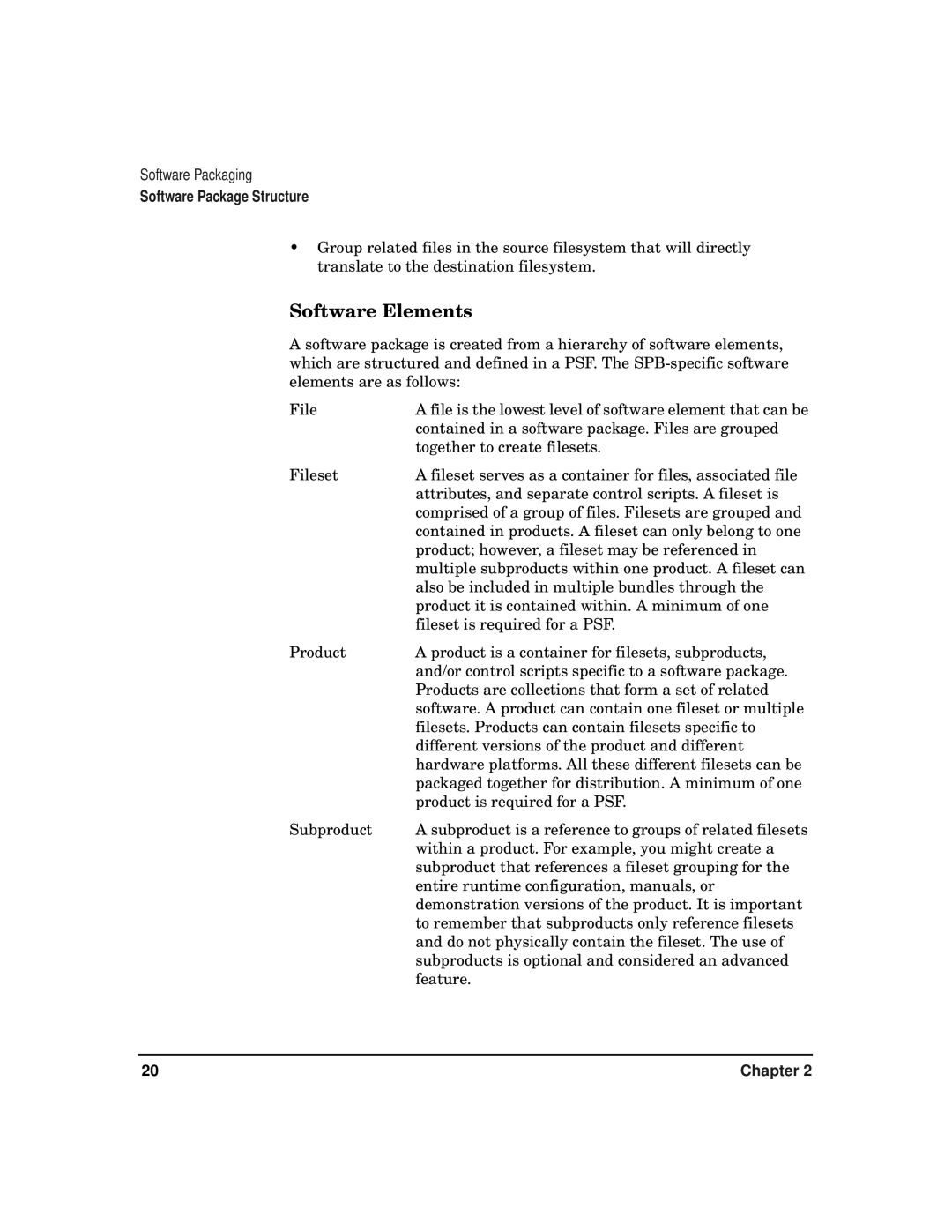Software Packaging
Software Package Structure
•Group related files in the source filesystem that will directly translate to the destination filesystem.
Software Elements
A software package is created from a hierarchy of software elements, which are structured and defined in a PSF. The
File | A file is the lowest level of software element that can be |
| contained in a software package. Files are grouped |
| together to create filesets. |
Fileset | A fileset serves as a container for files, associated file |
| attributes, and separate control scripts. A fileset is |
| comprised of a group of files. Filesets are grouped and |
| contained in products. A fileset can only belong to one |
| product; however, a fileset may be referenced in |
| multiple subproducts within one product. A fileset can |
| also be included in multiple bundles through the |
| product it is contained within. A minimum of one |
| fileset is required for a PSF. |
Product | A product is a container for filesets, subproducts, |
| and/or control scripts specific to a software package. |
| Products are collections that form a set of related |
| software. A product can contain one fileset or multiple |
| filesets. Products can contain filesets specific to |
| different versions of the product and different |
| hardware platforms. All these different filesets can be |
| packaged together for distribution. A minimum of one |
| product is required for a PSF. |
Subproduct | A subproduct is a reference to groups of related filesets |
| within a product. For example, you might create a |
| subproduct that references a fileset grouping for the |
| entire runtime configuration, manuals, or |
| demonstration versions of the product. It is important |
| to remember that subproducts only reference filesets |
| and do not physically contain the fileset. The use of |
| subproducts is optional and considered an advanced |
| feature. |
20 | Chapter 2 |
